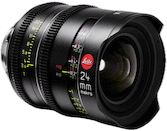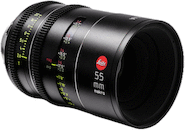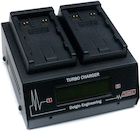- REVIEWS
Canon EOS C300 Mark III (PL)
Includes
- Canon EOS C300 Mark III
- PM-V1 PL mount (attached)
- Grip
- Grip lock
- LA-V2 LCD
- UN-5 1.3-ft. monitor cables
- Top handle
- LA-V2 attachment bracket
- Mic mount
- BP-A60 battery
- Canon CG-A20 charger
- Canon CA-CP200B Compact Power Adapter
- Non polarized cable
- Wooden Camera 15V Power Supply (4pin XLR Female)
- 3-prong cable
- Hardware kit
Resources
Recommended:
Support
Accessories
CFexpress Type B Media
Lenses
Master Primes (PL)
Lenses
Sumire lenses
THALIA Lenses (PL)
Lenses
Lenses
Batteries
Chargers
Available Today
Available Today

Available Today
Available Today

Available Today
Available Today

Available 04/30/25
Available 04/30/25

Available Today
Available Today

Available Today
Available Today

Available Today
Available Today

Available Today
Available Today

Available Today
Available Today

Available Today
Available Today

Available Today
Available Today

Available Today
Available Today

Available Today
Available Today

Available Today
Available Today

Available Today
Available Today

Available Today
Available Today

Available Today
Available Today

Available Today
Available Today

Available Today
Available Today

Available Today
Available Today

Available Today
Available Today

Available Today
Available Today

Available Today
Available Today

Available Today
Available Today

Available Today
Available Today

Available Today
Available Today

Available Today
Available Today

Available Today
Available Today

Available Today
Available Today

Available Today
Available Today

Available Today
Available Today

Available Today
Available Today

Available Today
Available Today

Available Today
Available Today

Available Today
Available Today

Available Today
Available Today

Available Today
Available Today

Available Today
Available Today

Available 05/06/25
Available 05/06/25

Available Today
Available Today

Available 05/06/25
Available 05/06/25

Available Today
Available Today

Available Today
Available Today

Available Today
Available Today

Available Today
Available Today

Available Today
Available Today

Available Today
Available Today

Available Today
Available Today

Available Today
Available Today

Available Today
Available Today

Available Today
Available Today

Available Today
Available Today

Available Today
Available Today

Available Today
Available Today

Available Today
Available Today

Available Today
Available Today

Available Today
Available Today

Available Today
Available Today

Available Today
Available Today

Available Today
Available Today

Available Today
Available Today

Available Today
Available Today

Available Today
Available Today

Available Today
Available Today

Available Today
Available Today

Available Today
Available Today

Available Today
Available Today

Available Today
Available Today

Available Today
Available Today

Available Today
Available Today

Available Today
Available Today

Available Today
Available Today

Available 04/24/25
Available 04/24/25

Available Today
Available Today

Available Today
Available Today

Available 04/24/25
Available 04/24/25

Available Today
Available Today

Available Today
Available Today

Available 05/15/25
Available 05/15/25

Available Today
Available Today

Available Today
Available Today

Available Today
Available Today

Available Today
Available Today

Available Today
Available Today

Available Today
Available Today

Available Today
Available Today

Available Today
Available Today

Available Today
Available Today

Available Today
Available Today

Available Today
Available Today

Available Today
Available Today

Available Today
Available Today

Available Today
Available Today

Canon EOS C300 Mark III (PL)
The Canon EOS C300 Mark III (PL) is a cinema-quality camera with a Super 35 Dual Gain Output sensor that is capable of recording Canon Cinema RAW Light to dual CFexpress media slots. Key features include:
Super 35mm dual gain output CMOS sensor
Internal, 10-bit Canon RAW Light to dual CFexpress slots
Canon Log 2 and 3 Gammas
PL-mount lens compatibility; DIG!C DV7 processor
Remember the C300 Mark II? The Canon EOS C300 Mark III is an update to the Canon C300 Mark II in name only. This camera is a close relative of the Canon EOS C500 Mark II; in fact, the C300 III’s body is identical to the C500 II. This means the C300 III is more modular than its predecessor, and that it can use all the accessories designed for the C500 II. There’s also anamorphic desqueeze support for 2x and 1.3x lenses.
Canon Super 35mm Dual Gain Output Sensor. This next-gen CMOS sensor provides 4K capture, but it also improves on many of its predecessor’s already great specs. It generates high dynamic range by combining images using pixels shot with a saturation-prioritizing amplifier for bright regions while using a lower-noise amplifier for darker areas while boasting dynamic ranges beyond sixteen stops.
DIGIC DV7 Image Processor. The speedy DIGIC DV7 processor works in tandem with the imaging sensor to guarantee high frame-rate recording. This processor also powers Cinema RAW light recording, HDR output, image stabilization, and proxy recording.
PL Lens Mount. This version of the C300 Mark III features the Positive Lock (PL) mount, making it compatible with a wide range of professional cinema lenses.
Canon Log 2 and 3 Gammas. Designed to take advantage of the C300 Mark III’s 10-bit recording capability, the files produced using Log format enable a large degree of color correction/grading in post-production with minimal image degradation. Canon Log 2 gives you the largest dynamic range and image details, and is most flexible in post, but it requires more time in color correction. Canon touts that it offers dynamic range up to sixteen stops. Canon Log 3 is an alternative that gives you a shorter turnaround time with an only marginally reduced, 14-stop dynamic range.
Canon Cinema RAW Light and XF-AVC Recording. The Canon Cinema RAW Light codec lets you internally record RAW and DCI 4K data to dual CFexpress cards via the dual CF express media slots. Cinema RAW Light’s 16-plus stop dynamic range gives you a lot of freedom for grading while producing files that are 1/3 to 1/5 times the size of Canon Cinema RAW, balancing image quality and codec efficiency. You also get the new XV-AVC codec that lets you record 4K and 2K images directly onto CFexpress cards. On top of the standard Intra-based XF-AVC codecs, a new lightweight Long GOP-based codec boasts a data rate that’s less than half of a conventional Intra codec.
Proxy Recording. The C300 III’s image processor allows it to simultaneously record 2K proxy files, which have a lower bandwidth that make them ideal for initial file sharing and rough cutting. While you’re recording Cinema RAW Light to an internal CFexpress card, you can also record an XF-AVC 2K 4:2:0 8-bit proxy to an internal SD card.
Q & A
Yes! We offer the Canon EOS C300 Mark III Premium Kit – PL, which is based around this camera.
Yes! If you’d prefer this camera with a native EF Canon mount, we also offer the C300 Mark III with a Locking EF and standard EF mount.
We do not include a memory card with the camera by default but CFExpress cards and readers are available here as separate rental items.
Specifications
| Brand | Canon |
| Camera Type | Camcorder |
| Imaging | Sensor
|
| Inputs/Outputs | Audio Inputs
|
| Item Type | Camera |
| Mount | PL Mount |
| Physical | Dimensions (WxHxD)
|
| Power Supply | Input
|
| Recording | Media
|
Includes
- Canon EOS C300 Mark III
- PM-V1 PL mount (attached)
- Grip
- Grip lock
- LA-V2 LCD
- UN-5 1.3-ft. monitor cables
- Top handle
- LA-V2 attachment bracket
- Mic mount
- BP-A60 battery
- Canon CG-A20 charger
- Canon CA-CP200B Compact Power Adapter
- Non polarized cable
- Wooden Camera 15V Power Supply (4pin XLR Female)
- 3-prong cable
- Hardware kit
Specifications
| Brand | Canon |
| Camera Type | Camcorder |
| Imaging | Sensor
|
| Inputs/Outputs | Audio Inputs
|
| Item Type | Camera |
| Mount | PL Mount |
| Physical | Dimensions (WxHxD)
|
| Power Supply | Input
|
| Recording | Media
|
Resources
Reviews
Pricing Chart
Lensrentals.com offers rentals ranging in length from 1 to 90 days. The shopping cart will automatically update the quoted price as you adjust the length of your rental. Our most common rental periods are shown below:
| Rental Period | Lenscap+ | Rental Price | Total Price | Price Per Day (Approx.) |
|---|---|---|---|---|
| 3 days | $42.00 | $243.00 | $285.00 | $95.00 |
| 4 days | $45.00 | $260.00 | $305.00 | $76.25 |
| 7 days | $60.00 | $347.00 | $407.00 | $58.14 |
| 10 days | $81.00 | $468.00 | $549.00 | $54.90 |
| 14 days | $105.00 | $607.00 | $712.00 | $50.86 |
| 21 days | $141.00 | $815.00 | $956.00 | $45.52 |
| 30 days | $177.00 | $1024.00 | $1201.00 | $40.03 |
| 45 days | $231.00 | $1336.00 | $1567.00 | $34.82 |
| 60 days | $270.00 | $1562.00 | $1832.00 | $30.53 |
| 90 days | $348.00 | $2013.00 | $2361.00 | $26.23 |
| Rental Period | Lenscap | Rental Price | Total Price | Price Per Day (Approx.) |
|---|---|---|---|---|
| 3 days | $28.00 | $243.00 | $271.00 | $90.33 |
| 4 days | $30.00 | $260.00 | $290.00 | $72.50 |
| 7 days | $40.00 | $347.00 | $387.00 | $55.29 |
| 10 days | $54.00 | $468.00 | $522.00 | $52.20 |
| 14 days | $70.00 | $607.00 | $677.00 | $48.36 |
| 21 days | $94.00 | $815.00 | $909.00 | $43.29 |
| 30 days | $118.00 | $1024.00 | $1142.00 | $38.07 |
| 45 days | $154.00 | $1336.00 | $1490.00 | $33.11 |
| 60 days | $180.00 | $1562.00 | $1742.00 | $29.03 |
| 90 days | $232.00 | $2013.00 | $2245.00 | $24.94 |
| Rental Period | Rental Price | Price Per Day (Approx.) |
|---|---|---|
| 3 days | $243.00 | $81.00 |
| 4 days | $260.00 | $65.00 |
| 7 days | $347.00 | $49.57 |
| 10 days | $468.00 | $46.80 |
| 14 days | $607.00 | $43.36 |
| 21 days | $815.00 | $38.81 |
| 30 days | $1024.00 | $34.13 |
| 45 days | $1336.00 | $29.69 |
| 60 days | $1562.00 | $26.03 |
| 90 days | $2013.00 | $22.37 |
Shipping Rates
Return shipping is included in the shipping price, and we include a prepaid return label with your order - all you need to do is bring it to an appropriate drop-off location when your rental is complete.
Enter shipping zip code
| FedEx 2Day | $25.00 shipping |
| FedEx Standard Overnight | $38.00 shipping |
| UPS Ground | $25.00 shipping |
| UPS Next Day Air | $48.00 shipping |
Diagrams
Canon EOS C300 Mark III (PL)
Rental






















